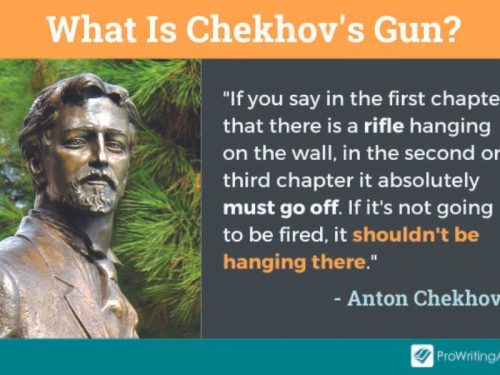Don’t misuse Checkov’s Gun
Anton Chekhov, a Russian playwright and short story-writer, believed that writers should not introduce details that don’t contribute to the story
How many times have you read a book or watched a movie that gives details which have no significance in the story to follow? This has long been a pet peeve of the literary world and in particular of Anton Chekhov (1860-1904), a Russian playwright and short story-writer. Chekhov believed that writers should not introduce details that don’t contribute to the plot. “One must never place a loaded rifle on the stage if it isn’t going to go off. It’s wrong to make promises you don’t mean to keep,” he said.
To emphasise this principle, Chekhov used the analogy of the loaded rifle in his play The Seagull where a gun mentioned at the beginning of the story was fired at the end. The rifle used to kill a seagull in the early chapters, was later used by the protagonist to kill himself.
The gun is a metaphor for any element of the story. For instance a person, object, event or place. The right way to use the gun is to draw the attention of readers to the ‘gun’ at the very beginning of the plot and then use it dramatically in the end. The gun should ‘go off ’, meaning it should have a significant impact on the story.
Chekhov’s Gun is the opposite of a red herring where an element is introduced in the story to throw the audience off the actual trail.
The literary world has many examples of Chekhov’s Gun. For instance the character of Magwitch in Charles Dickens’ Great Expectations. He is introduced early in the story with a lot of mystery surrounding him. The reader is intrigued, but Magwitch is not mentioned again for a major part of the novel. But later on he is revealed as the financial benefactor of the protagonist Pip.
In more recent times, in The Hunger Games by Suzzane Collins, the main character Katniss’ understanding of poisonous plants is the gun. It seems insignificant in the beginning but makes a dramatic comeback as Katniss uses poisonous berries to trick the Capitol into releasing her and Peeta.
Similarly, Harry Potter books feature several instances of Chekhov’s Gun. For example, the author JK Rowling mentions bezoar (a mass often found trapped in the gastroinestinal system) in the first book during Potter’s first Potions class. The bezoar is reintroduced in Book 6 where it is used to save Ron after he drinks poisonous mead. Similarly, the golden snitch mentioned in the first book during a game of Quidditch returns in the final novel as the hiding place of the resurrection stone.
An example of Chekhov’s Gun in a popular film is found in The Shawshank Redemption where a poster, rock, hammer and the Bible get perfunctory mention in the beginning and later contribute to the movie’s amazing climax. Similarly, in M Night Shyamalan’s film Signs, the ‘gun’ is the glasses of water which form an important part of the final scenes.
Exercise: Identify the movies in which these Chekhov’s Guns appear: 1. Tarantula 2. Crossing the streams 3. Timeturner 4. Power Loader 5. Baseball bat
Films:
Home Alone 1.
Ghostbusters 2.
Harry Potter and the Prisoner of Azkaban 3.
Aliens 4.
Signs
















Add comment